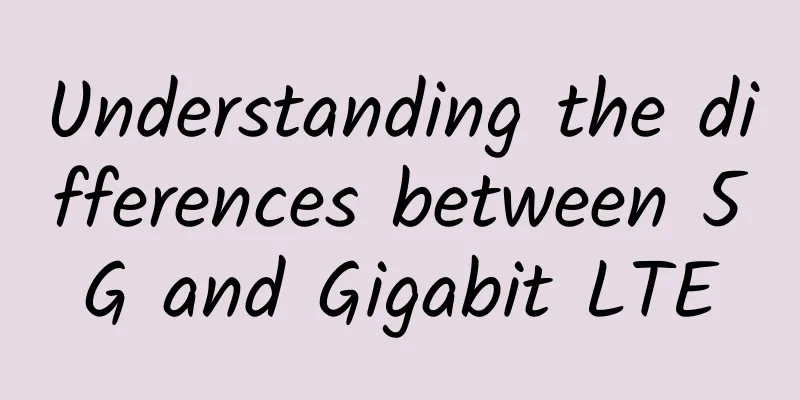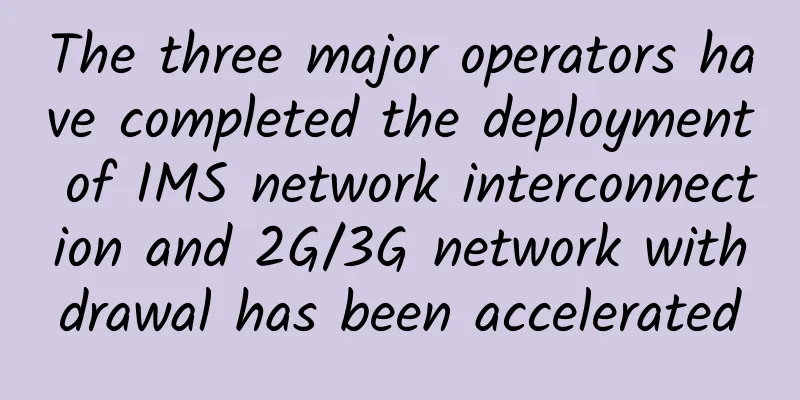Understanding the differences between 5G and Gigabit LTE

|
5G is coming, at least some carriers think so. But you won't find a phone that can actually use 5G until at least 2019. Meanwhile, other networks and device makers have been trialing Gigabit LTE for faster network speeds as early as 2015. As AT&T tries to entice consumers with its "5G Evolution" plan, it's becoming increasingly difficult to know exactly what the world's next generation of wireless networks will look like.
Figure 1 5G is coming Will we see true 5G soon? Will Gigabit LTE get worse or just as good as the original? Will consumers actually use it on their phones? Let's explain the differences between the two network technologies and try to find the answers. Technical Standards The problem with 5G and Gigabit LTE confusion is that companies and carriers have been using the terms to describe different things. There are some distinctions between 5G Non-Standalone and the (upcoming) 5G Standalone standard, and what that means for products and use cases — in short, 5G is not a single “thing.” Similarly, Gigabit LTE networks have been built using new high- and/or low-frequency spectrum, unlicensed spectrum, and aggregation from LTE and Wi-Fi signals. It’s also been called LTE-Advanced, LTE Advanced Pro, and “pre-5G,” among other names, but the unifying factor is that Gigabit LTE is capable of delivering download speeds in excess of 1 Gbps. There are many ways to achieve faster wireless data speeds, which has led to some of the confusion. We will follow some of the details in the 3GPP standards to tell you how each technology works and what it can provide to consumers. The first specification for speeds exceeding 1 Gbps was published in the 3GPP Release 13 protocol version, and the first 5G NSA protocol specification was published in the 3GPP Release 15. Figure 2 3GPP related protocol evolution As can be seen from the table above, as these protocol versions are gradually increased, additional features and hardware support are introduced to achieve higher transmission speeds. Some major technical theories are associated with faster transmission speeds: an increase in the number of carriers that can be aggregated, greater MIMO, and support for a wider range of spectrum sharing technologies. The shift to the 5G non-standalone (New Radio, New Radio, NR) specification aims to further increase network speeds by adding more spectrum and carriers in the sub-6 GHz bands and millimeter wave frequencies. In terms of speed, the introduction of LTE-Advanced Pro and 5G New Radio allows us to surpass the 1 Gbps network speed barrier. However, it is worth mentioning at this time that user peak data rates will be much lower than these theoretical maximums.
Figure 3 5G device prototype Both 5G and Gigabit LTE aim to increase speeds by increasing the range of available frequencies and the number of carriers that transmit data. That's because actual speeds depend on the type of spectrum available in your area, such as millimeter wave antennas or LAA small-cell hubs, and the technology the phone in your pocket supports. Having a 5G phone doesn't guarantee speeds faster than Gigabit LTE. Now, let’s take a closer look at the various technologies involved in these released 3GPP agreements and how they relate to 5G and Gigabit LTE. How they work The key to increasing data speeds is through carrier aggregation, which is the process of combining data from multiple sub-unit carrier bandwidths to increase throughput. The first generation of LTE networks and phones used only a single 20 MHz carrier bandwidth, but LTE-Advanced introduced the concept of mixed carrier bandwidths in LTE networks. This was followed by LTE-Advanced Pro, which further increased the number of aggregated carriers and began to support various technologies in unlicensed spectrum. Unlicensed spectrum includes mixing signals from Wi-Fi bands such as 2.4GHz or 5Ghz, as well as other small cell implementations around similar sub-6GHz bands. Multiple-input, multiple-output (MIMO) technology is also important. This is similar to carrier aggregation in that the data stream can be sent in parallel across multiple antennas for each carrier bandwidth. In addition to being used to increase throughput, multiple-input, multiple-output (MIMO) can also check for errors and prevent packet loss by sending the same data to these parallel antennas. When it comes to 5G radios that use millimeter wave technology, massive MIMO becomes even more important. This is because very high-frequency millimeter wave technology relies more on line-of-sight communications, so MIMO is critical to ensuring that messages can reach the destination phone intact. Figure 4: LTE evolution to 5G With Gigabit LTE, five or more LTE carriers are aggregated to provide higher peak data rates. This can come from a variety of spectrum, including long-range low-band spectrum below 1 GHz, such as T-Mobile's 600 MHz spectrum. In built-up areas, such as city centers, you may find these traditional LTE bands augmented with additional macro cells that operate in unlicensed spectrum to further increase the number of available bands for aggregation and provide more bandwidth, thereby increasing transmission rates. Aggregation from multiple carriers also has advantages for improving user speeds at the edge of a cell network, as multiple weaker signals can be combined together for higher throughput. Of course, to use these high speeds, you need a smartphone that not only has a modem compatible with these technologies, but also a radio front end that can pick up data in the correct frequency band provided by your carrier. The first generation of 5G networks will continue to use the familiar LTE anchor, expanding upon what Gigabit LTE can do with new millimeter wave and new bands of dedicated 5G spectrum. In other words, the first 5G networks will take the long-running idea of carrier aggregation to the next level by opening up new spectrum bands for mobile data. Figure 5 Gigabit LTE Moving to new millimeter wave and other high-frequency bands is what really separates 5G from Gigabit LTE, but the transition is not a simple switch. These high frequencies are easily blocked by walls and even your hand. That’s right, even holding your smartphone is enough to block very high frequency data from reaching the antenna. 5G smartphone antennas will need to be redesigned so that they can handle the more finicky frequencies. The radio RF front end will also have to be tweaked to cater to these bands, which will require some lower-level product redesign work. This is one of the problems encountered when rolling out 5G millimeter wave transmitters with beamforming and other related technologies. While Gigabit LTE was easier to put into products because it is based on existing common radio technology, 5G mmWave presents new design challenges. In addition to smartphone-class cellular broadband, Gigabit LTE and 5G New Radio offer a range of new communication technologies and protocols for emerging use cases. LTE Direct, LTE Broadcast and C-V2X are designed to enable device-to-device connectivity without traversing large cellular networks. In addition, the Internet of Things using eMTC and narrowband IoT technologies is supported for a wide range of applications from smart homes to drones. Figure 6 Characteristics of 5GNR Gigabit LTE is easier to implement because the antenna array design is very similar to what is used today and the power consumption remains mostly the same. With Gigabit LTE, the smartphone design and form factor will likely remain the same, while 5G smartphones will require some significant redesign. Which one should we care about? With the huge marketability and potential paradigm shift of 5G, Gigabit LTE may be a little easy to overlook. But the technology is still providing important speed improvements for consumers, and many LTE networks around the world are still experiencing a lot of growth. Take a look at the data collected for some of the fastest countries in the world, including the United States, Europe, India, and other countries. Operators in these countries can clearly catch up with industry leaders like South Korea without the need for 5G technology. For smartphones, Gigabit LTE can be used in even the toughest consumer mobile use cases, such as 4K video streaming, which only requires download speeds of around 13 Mbps for live streaming. Of course, just being on a Gigabit LTE network doesn’t mean you’ll actually see speeds of 1000Mbps, but transfer speeds over 50Mbps are common on these networks. Instead, 5G will be more about mass IoT and very low latency use cases, such as autonomous self-driving cars, marking a major shift in the mobile user experience for everyday Internet usage. Figure 7 5G modems may be faster than Gigabit LTE, but real-world mobile use case speeds will likely be very similar Practicality is also an important consideration. 5G technology requires a redesign not only in network hardware, but also in devices. New modems and, more importantly, front-end radio designs will be expensive and tricky to fit into existing mobile form factors and sizes. In contrast, Gigabit LTE is easy to implement, mostly by extending existing network LTE and Wi-Fi bands. This is not to deny the necessity of 5G as an important development stage of mobile networks. In addition to faster speeds, higher bandwidth and lower latency, 5G will enable revolutionary use cases in the IoT, automotive and connectivity industries, and enable new and more efficient services when the 5G backend changes the existing LTE core. However, the first 5G networks will not appear before at least 2019, and even if they do appear, most 5G networks will still be reserved for hotspot locations within certain cities. Modems and smartphones that use their RF front-end implementations may not be available until further in the future. Figure 8 5G layered coverage LTE will continue to power all global mobile networks for the foreseeable future. The first 5G non-standalone networks will actually just add spectrum to existing networks, making them even higher bandwidth. If you're thinking about buying a new smartphone, don't go for a 5G model. Any phone that's compatible with Gigabit LTE networks will continue to give you high-speed speeds for more or less a few years to come. |
>>: WOT2018 Wang Xiaobo: The "Phoenix" model of cache management, you deserve it
Recommend
Cisco will focus on the small and medium-sized enterprise market, Cisco Designed provides preferred services
[51CTO.com original article] Enterprises have alw...
There are so many IoT protocols: Which one is right for you among LoRa, Cat-M and NB-IoT?
It’s been nearly 30 years since the first unoffic...
When do microservices use the Http protocol to communicate, and when do they use Lrpc?
Let me first state the following conclusion. 1 Sp...
Huawei Network Energy "Innovation" on the Road
[51CTO.com original article] Introduction: "...
Seven QoS best practices for monitoring cloud traffic
The recent maturation of technologies such as hig...
Why TCP will not be replaced
The reasons for "complaining" about TCP...
Six ways 5G can save the global supply chain
5G enables real-time data at the point of origin,...
6G will usher in a new era for all industries
At this early stage, 6G wide-area wireless has fe...
With the advent of 5G, will the future of commercial Wi-Fi be a setback or a step forward?
Entering the Internet age, the Internet allows pe...
Computing power networks connect the digital society. How should operators seize the new opportunities of the era?
Computing network is an emerging technology conce...
Scenario-based × disruptive innovation: polishing the minimalist "light" with users
[[423919]] "Users asked for an optical netwo...
By 2027, the global Wi-Fi 6 market will reach $26.2 billion
According to market research firm ResearchAndMark...
10 solutions for high-concurrency and high-traffic websites
1. Hardware upgrade An ordinary P4 server can gen...
A detailed explanation of Brotli algorithm to save CDN traffic
In the early years, when I was a student, I often...
Gather: A method to optimize the number of control flow tables in SDN networks with in-band control
1. Introduction In-band SDN networks have attract...





![[11.11] Spinservers cloud server 50% off $19/month, dual core, 8G memory, 200G SSD, 10TB monthly traffic](/upload/images/67cac2342a4e5.webp)



